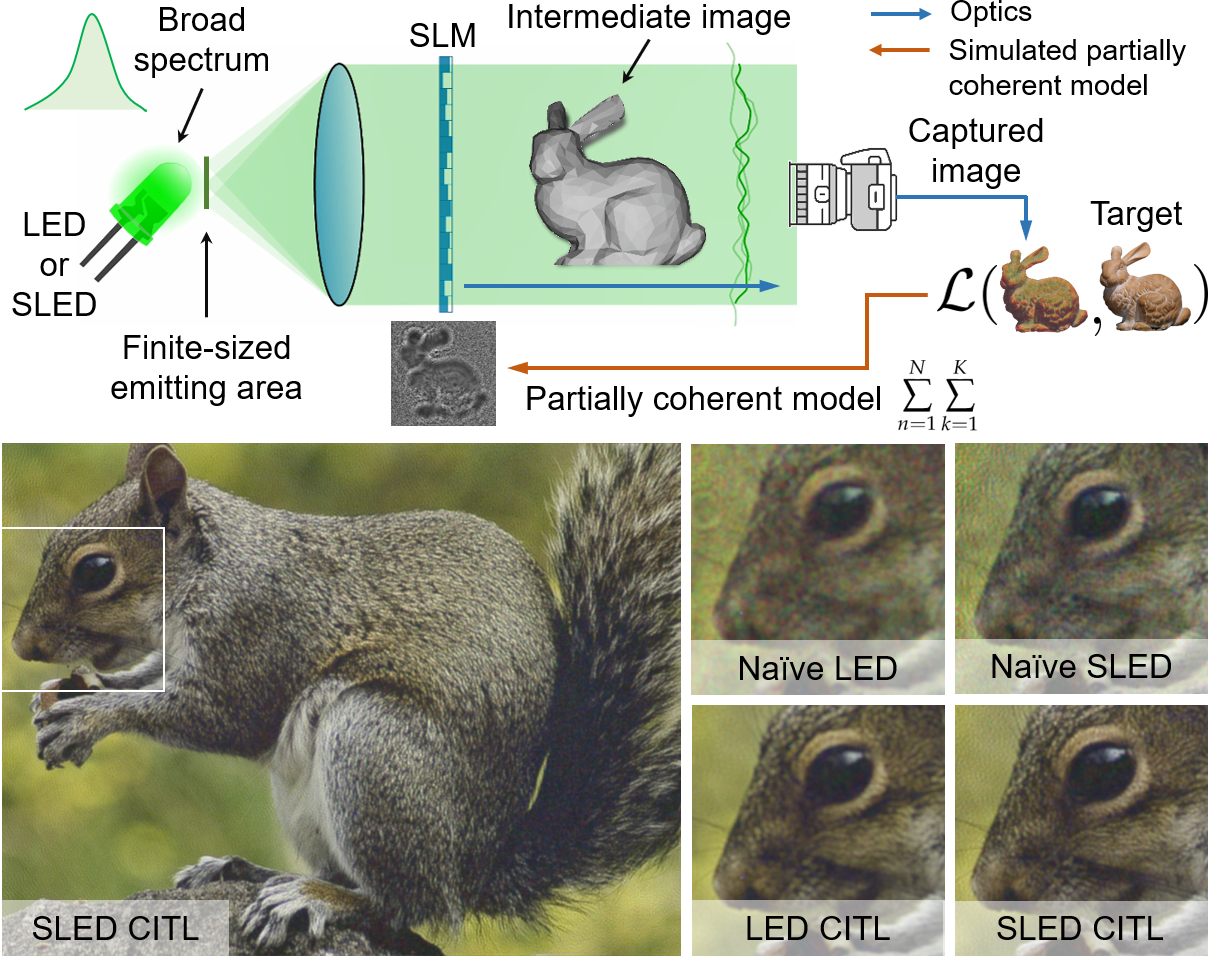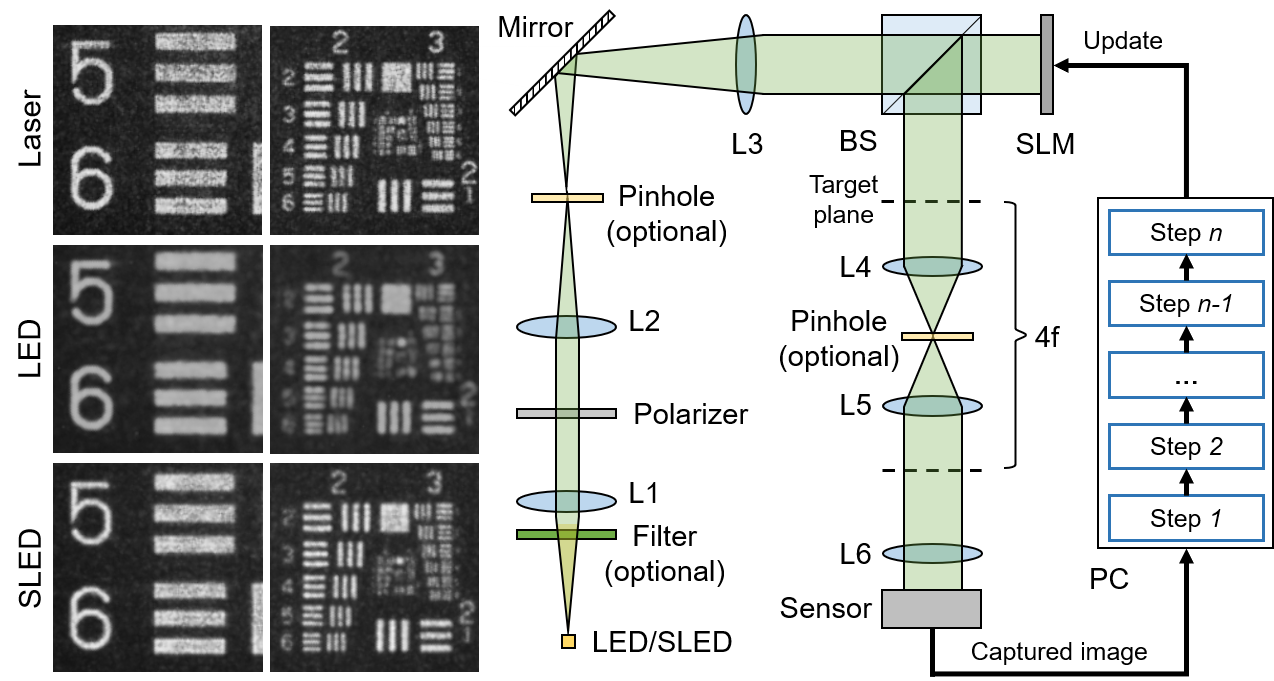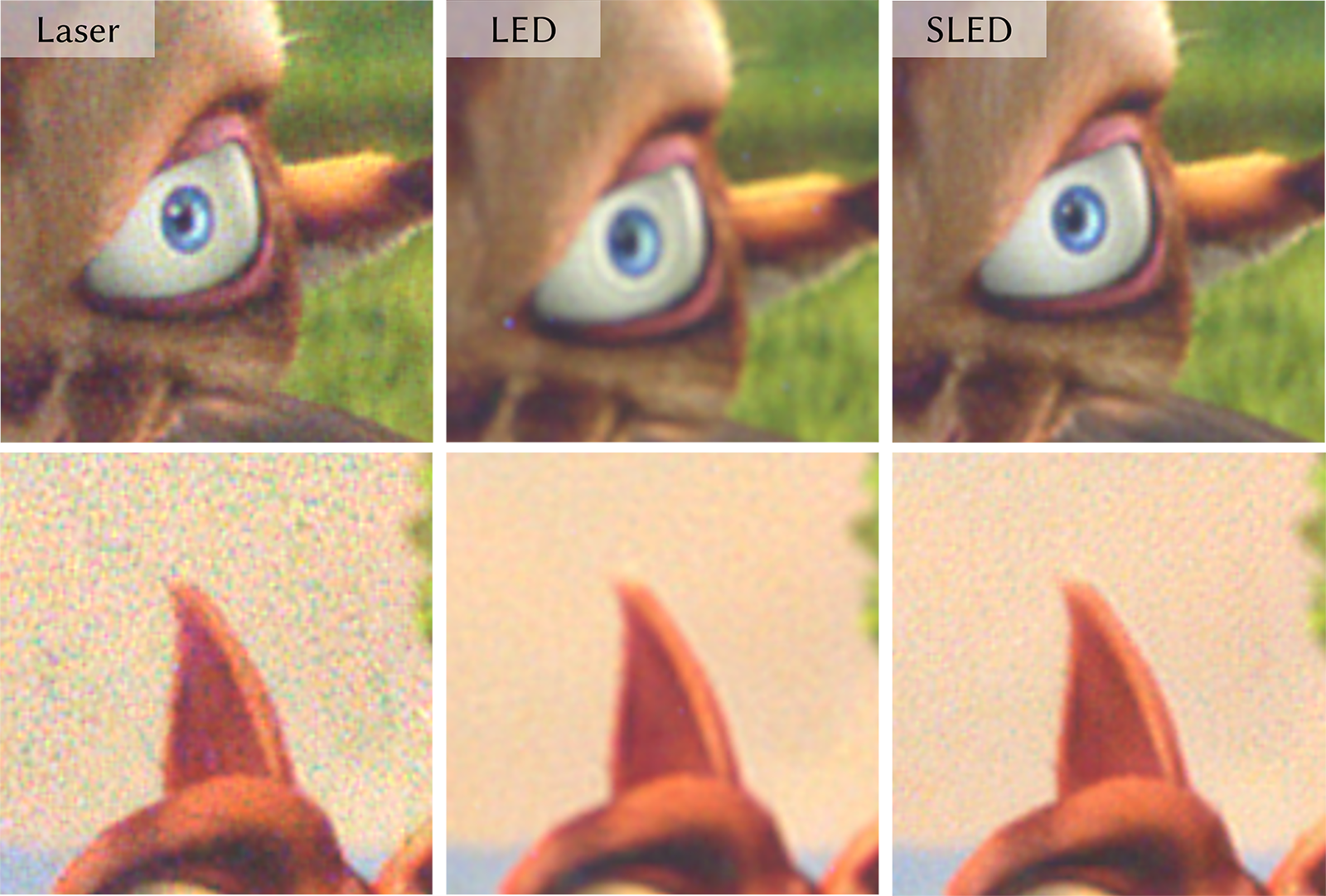ABSTRACT
Computer-generated holography (CGH) holds transformative potential for a wide range of applications, including direct-view, virtual and augmented reality, and automotive display systems. While research on holographic displays has recently made impressive progress, image quality and eye safety of holographic displays are fundamentally limited by the speckle introduced by coherent light sources. Here, we develop a new approach to CGH with partially coherent sources. For this purpose, we devise a wave propagation model for partially coherent light that is demonstrated in conjunction with a camera-in-the-loop calibration strategy. We evaluate this algorithm using light-emitting diodes (LEDs) and superluminescent LEDs (SLEDs) and demonstrate significantly improved speckle characteristics of the resulting holograms compared with coherent lasers. SLEDs in particular are demonstrated to be promising light sources for holographic display applications, because of their potential to generate sharp and high-contrast two-dimensional (2D) and 3D images that are bright, eye-safe, and almost free of speckle.
METHOD
 |
| Overview of holography with partially coherent light sources using CITL calibration. (Top) SLM phase patterns are iteratively shown, and the corresponding images were recorded by a camera. The error with reference to a target image is backpropagated into the phase pattern using the gradients of our partially coherent wave propagation model that considers a source of finite size and broad emission spectrum. (Bottom) Experimentally captured 2D holographic images. Compared with holograms computed by a naïve wave propagation model, the CITL procedure optimizes image quality. |
 |
| Resolution chart results shown on the holographic display setup. We present (Left) close-up photographs of a resolution chart displayed with various light sources and (Right) illustration of the holographic display setup. These holograms are experimentally captured for only the green color channel and visualized in grayscale. Note that the pinhole and spectral filter on the illumination path are only needed when using an LED as the light source. |
FILES
CITATION
Y. Peng*, S. Choi*, J. Kim, G. Wetzstein, Speckle-free holography with partially coherent light sources and camera-in-the-loop calibration (Science Advances), 2021
@article{peng2021partiallycoherent,
author = {Peng, Yifan and Choi, Suyeon and and Kim, Jonghyun and Wetzstein, Gordon},
title = {Speckle-free holography with partially coherent light sources and camera-in-the-loop calibration},
journal = {Science Advances},
year={2021}
}
Press Coverage
-
- Stanford News (link)
- ScienceBlog (link)
- Sci Tech Daily (link)



